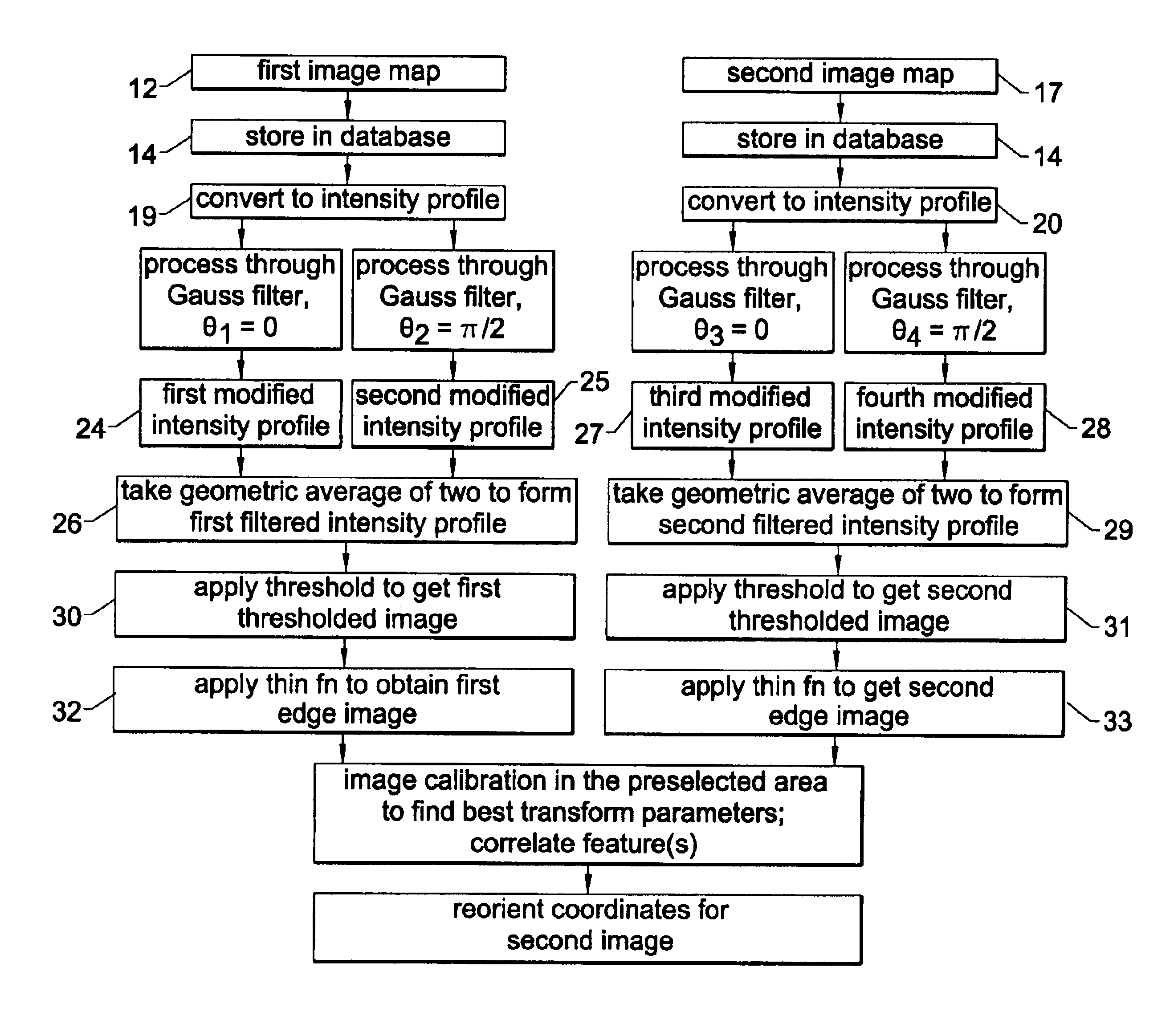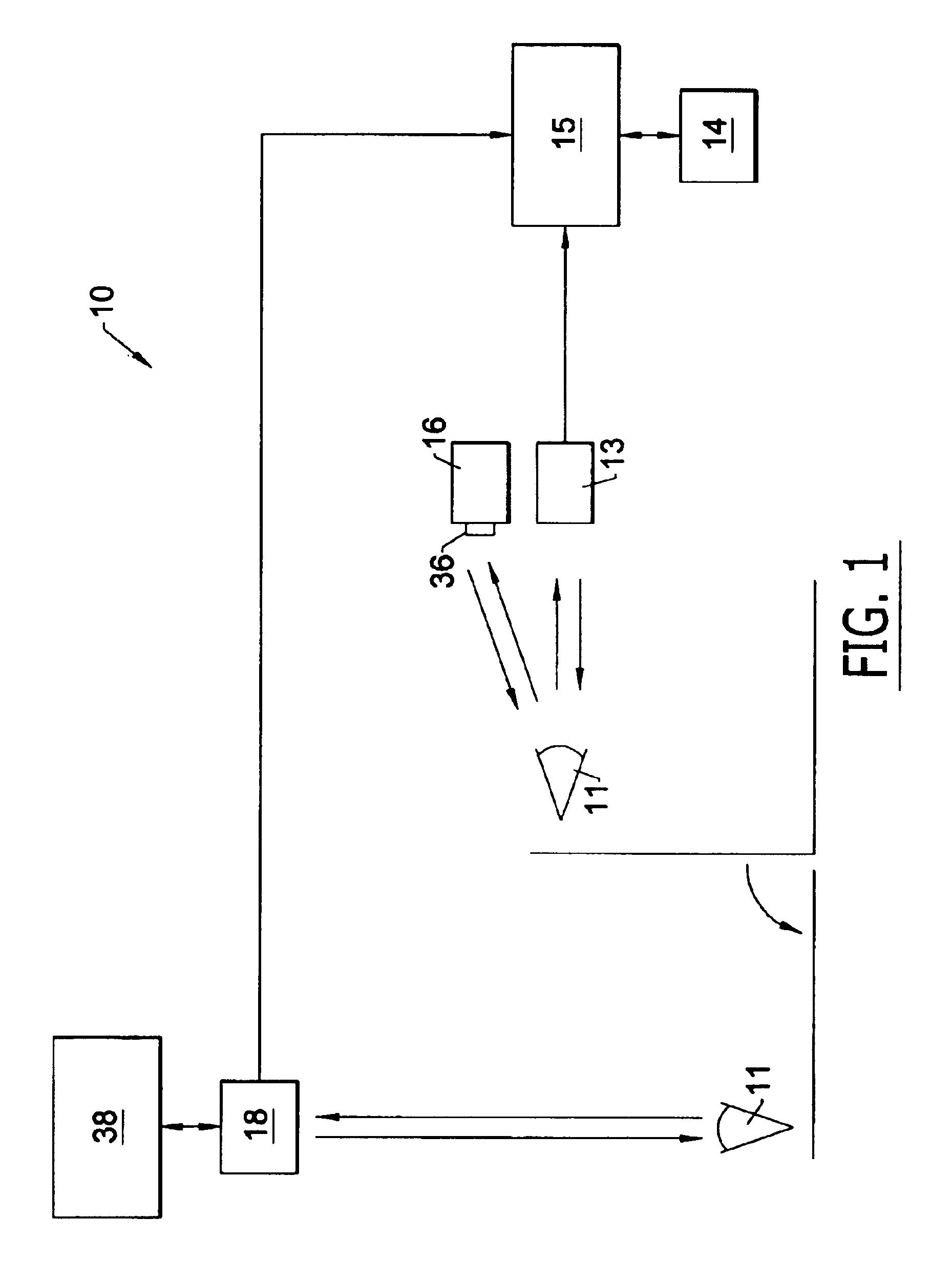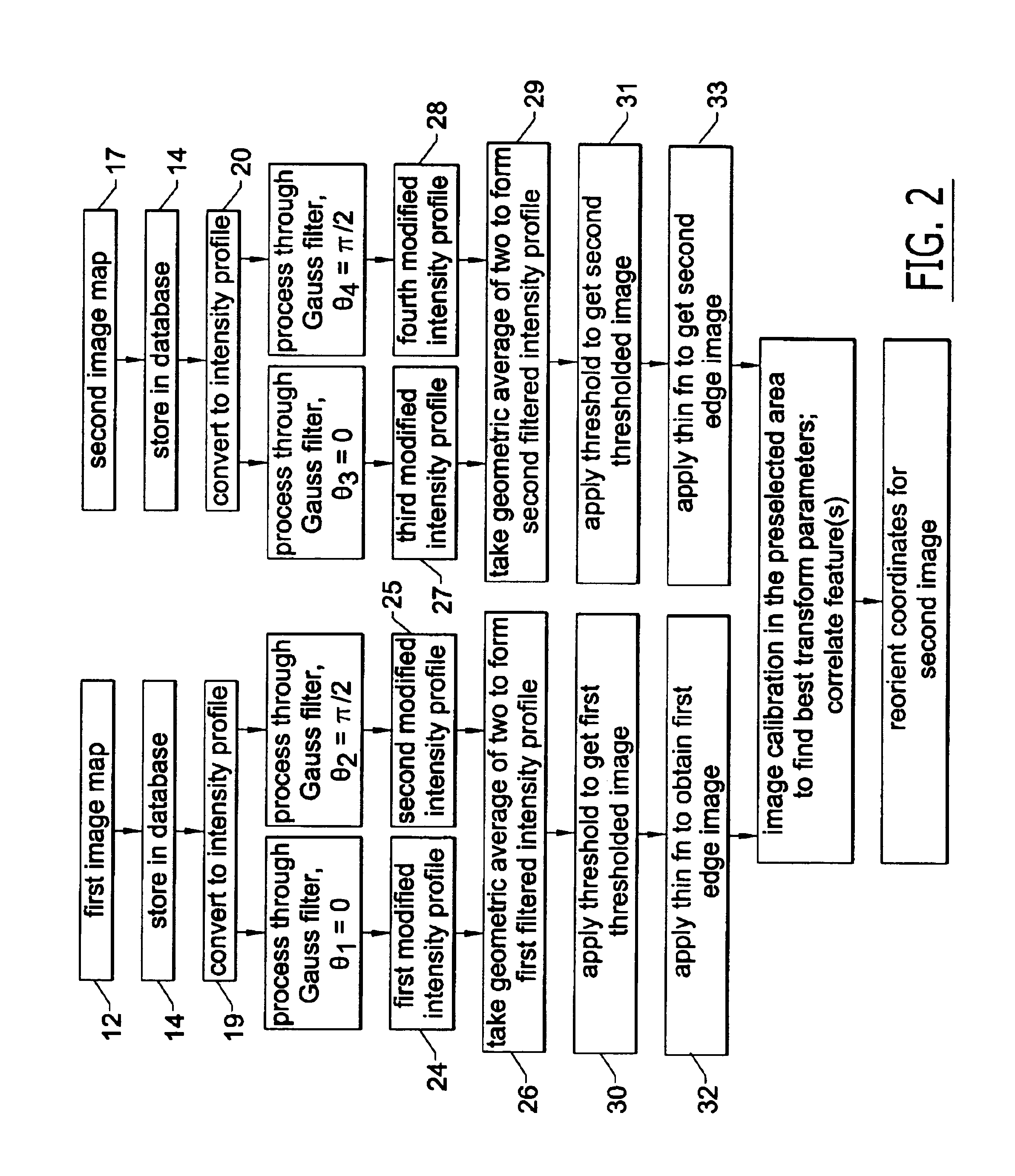Eye registration and astigmatism alignment control systems and method
a technology of alignment control and eye registration, applied in the field of eye registration and astigmatism alignment alignment control system and method, can solve the problems of affecting the accuracy of alignment, uncomfortable procedure for patients, and rapid loss of impression definition, so as to avoid placing patients and accurate orienting
- Summary
- Abstract
- Description
- Claims
- Application Information
AI Technical Summary
Benefits of technology
Problems solved by technology
Method used
Image
Examples
first embodiment
A schematic diagram of a system 10 of the invention is shown in FIG. 1, data flow and resulting images in FIG. 2, and original and processed images in FIGS. 3-8. A section on the image processing algorithms embodied herein follows the description of the system and method. In an exemplary embodiment of the system 10, a patient's eye 11 is image mapped in a substantially upright position by capturing a first video image 12 using a camera such as a charge-coupled-device (CCD) camera 13. Such an image 12 is illustrated in FIG. 3. The first image 12 is stored in a database 14 in electronic communication with a computer 15 and labeled as an original image from a first measurement.
Next an objective measurement is made on the eye 11 to determine a desired correction profile, using a measurement system 16 such as that disclosed in copending application Ser. No. 09 / 566,668, although this is not intended as a limitation.
Once the correction profile is determined, the patient is made ready for s...
second embodiment
the present invention includes an orientation system 40 for eye surgery for correcting at least astigmatism, which is shown schematically in FIG. 9. The graphical user interface and elements thereof are illustrated in FIG. 10. A means for making two alignment marks 41,42 on an eye 43 of a patient (FIG. 10) with the patient in a first position may comprise, for example, an ink pen 44, although this is not intended as a limitation, and alternative marking means known in the art may also be used. In current use, the first position typically comprises a seated upright position. In a preferred embodiment, the alignment marks 41,42 are made at the “3 o'clock” and “9 o'clock” positions to the eye's sclera 45 just outside the margin of the limbus 46. In other words, the alignment marks 41,42 are made at approximately the Π / 2 and 3Π / 2 radial positions relative to the limbus 46, with a 0 radial position comprising a top point of the limbus 46. Thus the alignment marks 41,42 are made substanti...
PUM
 Login to View More
Login to View More Abstract
Description
Claims
Application Information
 Login to View More
Login to View More - R&D
- Intellectual Property
- Life Sciences
- Materials
- Tech Scout
- Unparalleled Data Quality
- Higher Quality Content
- 60% Fewer Hallucinations
Browse by: Latest US Patents, China's latest patents, Technical Efficacy Thesaurus, Application Domain, Technology Topic, Popular Technical Reports.
© 2025 PatSnap. All rights reserved.Legal|Privacy policy|Modern Slavery Act Transparency Statement|Sitemap|About US| Contact US: help@patsnap.com



